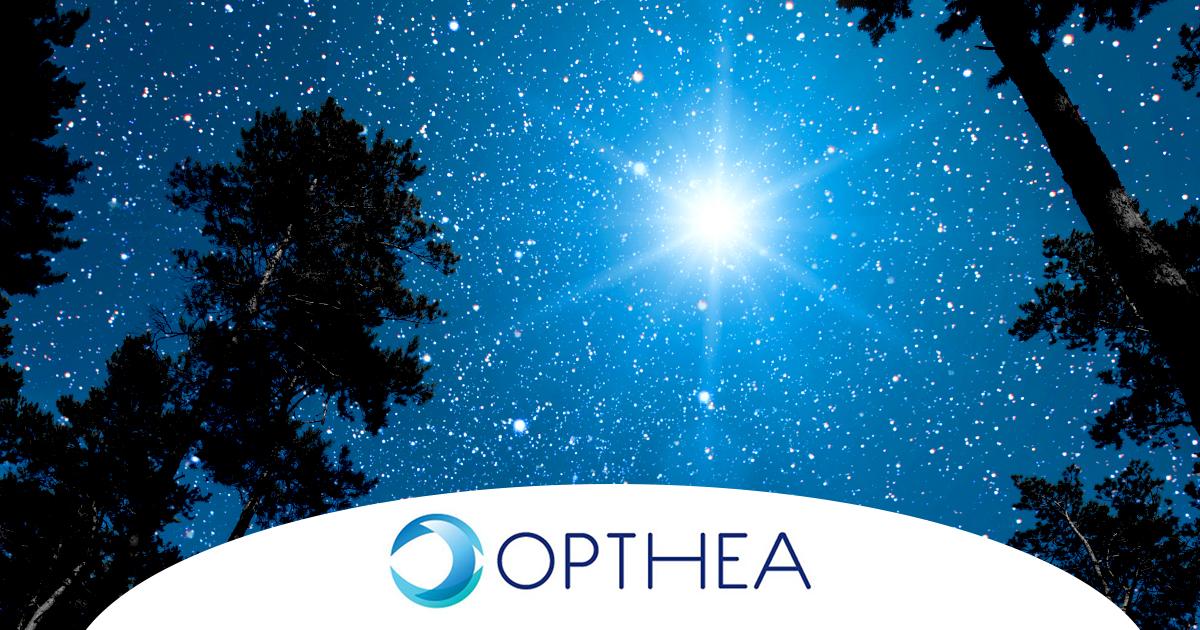Opthea’s Star Brightens for Stakeholders

It’s been a good year for Opthea Ltd., a biotechnology company based in Melbourne, Australia. It’s listed on the Australian Securities Exchange (ASX), trading as OPT.
Opthea is a top performer in the OIS Index of ophthalmic biotech and biopharma companies. While the OIS Index was down 12.0% over the 3 months from July through September, Opthea stock more than tripled in value over the same period ($.67 on July 1; $3.35 on Sept. 30).
The reasons? Likely twofold: good trial results and an influx of cash from Credit Suisse Holdings through stock purchases, contingent on voting rights.
Opthea is investigating OPT-302, a novel biological inhibitor of VEGF-C and VEGF-D for use in conjunction with VEGF-A and VEGF-B inhibitors for the treatment of wet age-related macular degeneration (AMD) and diabetic macular edema (DME).
Investors interviewed for this article consider the science a done deal: anti-VEGF inhibition is a proven therapy. An add-on to available blockers of VEGF-A and VEGF-B simply makes sense, they think.
It also makes sense to the scientists. “The retinal community and patients need an add-on to anti-VEGF therapy to improve visual results in AMD and diabetes,” said David Boyer, MD, Senior Partner, Retina-Vitreous Associates Medical Group, Los Angeles and Adjunct Clinical Professor, Ophthalmology,University of Southern California/Keck School of Medicine. Dr. Boyer has an extensive publishing and research background.*
In March 2019, S&P Dow Jones added Opthea to the S&P Index of All Ordinaries. The All Ordinaries, established in 1980, is the oldest index of publicly owned companies in Australia, and includes the 500 largest companies listed on the ASX.
A jump in stock price for Opthea can be traced back to the August release of Phase IIb results in patients with wet AMD. The study showed that OPT-302 combination therapy with VEGF-A inhibitor ranibizumab (Lucentis, Genentech/Novartis) given over 24 weeks, compared with ranibizumab alone, administered monthly, in treatment-naïve patients gained a mean of 14.2 letters from baseline on the standardized ETDRS eye chart. The Lucentis control group gained 10.8 letters, a mean increase of 3.4 letters.
A Phase IIa clinical trial investigating OPT-302 given in combination with VEGF-B inhibitor aflibercept (Eylea, Regeneron Pharmaceuticals) for the treatment of persistent/refractory DME is ongoing, with clinical results expected in the second quarter of 2020.
In addition to VA improvement, further data analyses show that OPT-302 has positive mechanistic effects on wet AMD lesion pathology, Opthea CEO Megan Baldwin, PhD, noted in a press release.
In an August conference call with investors, Dr. Baldwin said that the study results “clearly support advancing OPT-302 into pivotal registrational Phase III development. We firmly believe that OPT-302 … has considerable potential to improve outcomes in wet AMD and other retinal vascular diseases.”
Investors posting to HotCopper, which claims to be Australia’s largest stock trading and investment forum, believe that Opthea is undervalued. At least one investor, who asked to remain anonymous, doesn’t understand why the media haven’t made more of a fuss.
The Phase IIb wet AMD results, he said, represent the “first definitive trial where a combination VEGF approach has beaten the standard of care [Lucentis alone].” He also noted that Lucentis’ 10.8 letter improvement at 24 weeks was the highest gain reported; OPT-302 met that, and then some.
The investor said he considers the science behind OPT-302 mostly “de-risked,” so the question now is how much is the company worth and what is the best business and funding strategy going forward?
Which raises the issue of patents and time. Opthea’s technology is based on patents related to VEGF-C, VEGF-D, and VEGFR-3. Patents related to the OPT-302 molecule extend to February 2034; patents related to soluble VEGFR-3 molecules extend to November 2026.
Other companies besides Opthea are looking to compete in the next generation of anti-VEGF therapies. One is Kodiak Sciences. Its drug, called KSI-301, has a longer ocular half-life, which may allow for more time between injections – 3 months or longer compared with OPT-302, which is given every 4 weeks. Kodiak reported in July that KSI-301 improved vision and reduced retinal thickening in patients with AMD, DME, and macular edema from retinal vein occlusion.
But the VEGF-C blockade, as part of Opthea’s combination therapy, has considerable promise, said Dr. Boyer, who saw the Phase IIb results presented at OIS@AAO 2019 in October. “The trial was very well done and based on rational scientific evidence.”
Dr. Boyer also noted that “the finding of increased VEGF-C in patients undergoing treatment for AMD may explain the reason we see incomplete drying on OCT [optical coherence tomography] and possibly tachyphylaxis [diminishing effect over time]. I hope to see a bispecific [combination of OPT-302 and VEGF-A and VEGF-B blockers] available to treat our patients.”
*Dr. Boyer reports no financial interest in Opthea.
